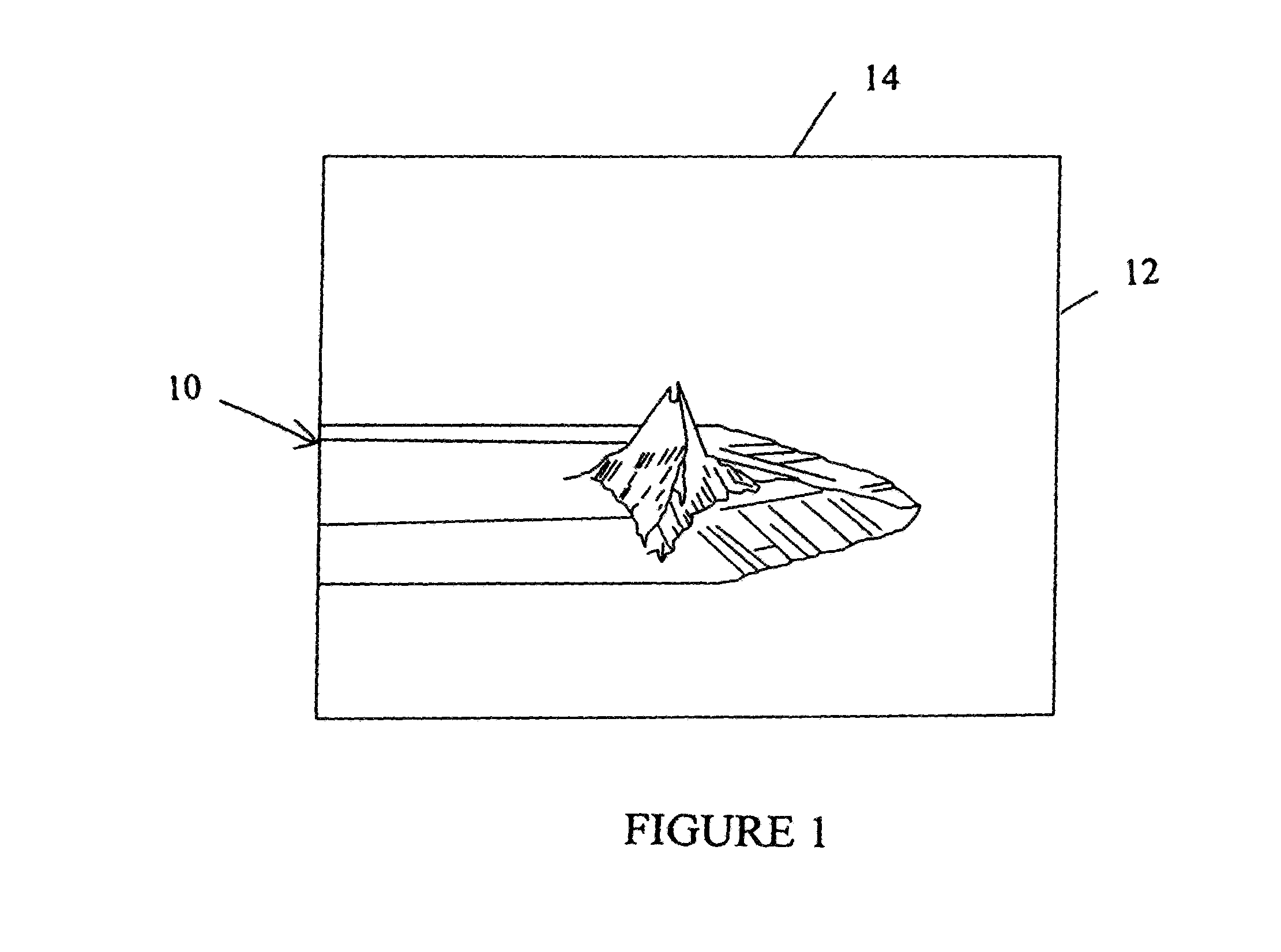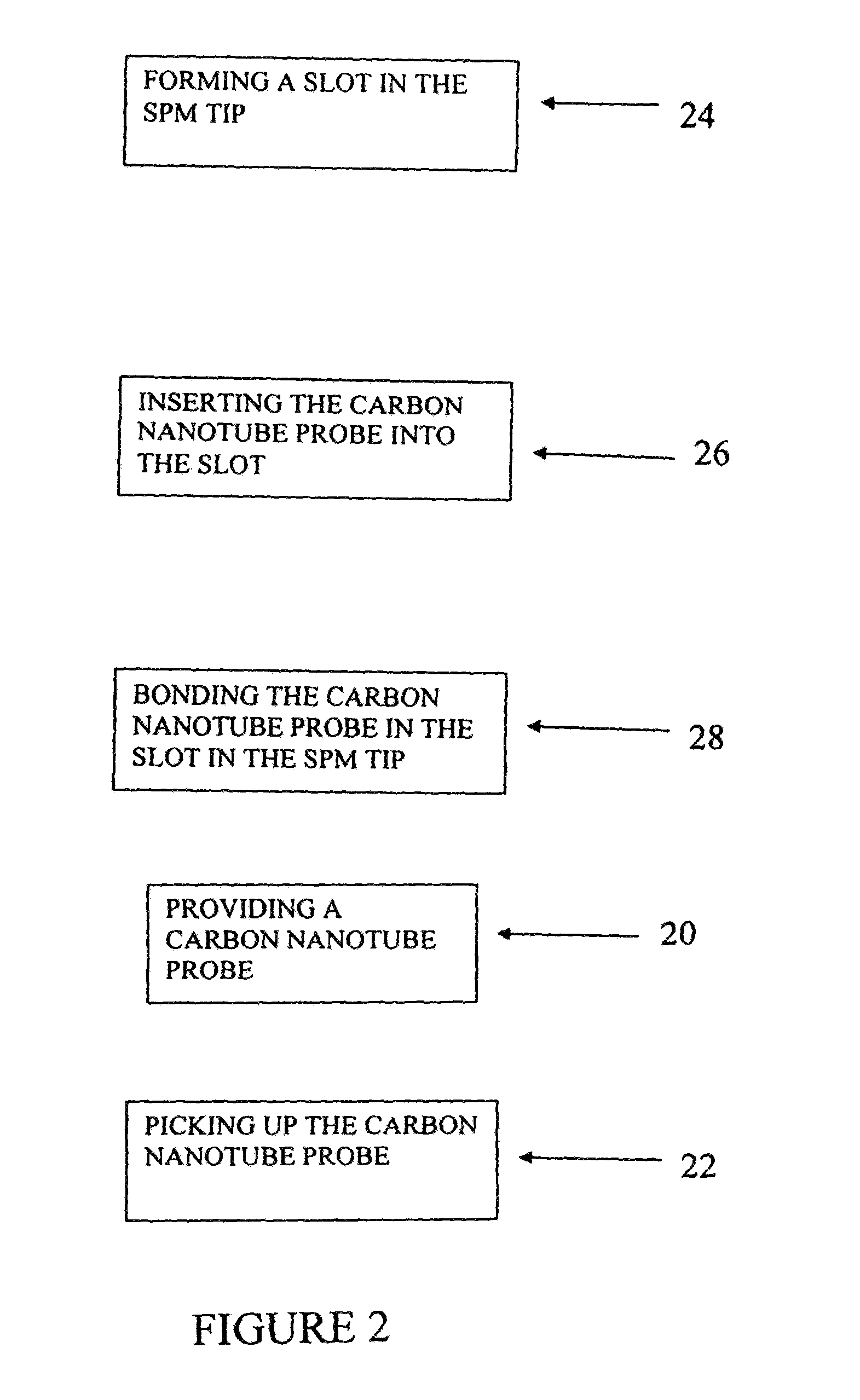Method and system to attach carbon nanotube probe to scanning probe microscopy tips
a carbon nanotube and microscopy tip technology, applied in the field of nanotubes, can solve the problems of easy damage or wear of the tip, the tip diameter of the scanning probe is generally greater than 10 nm, and the silicon probe is easy to be damaged or worn during use, and achieves excellent mechanical stability and easy control.
- Summary
- Abstract
- Description
- Claims
- Application Information
AI Technical Summary
Benefits of technology
Problems solved by technology
Method used
Image
Examples
Embodiment Construction
[0027]Before explaining the disclosed embodiments of the present invention in detail it is to be understood that the invention is not limited in its application to the details of the particular arrangements shown since the invention is capable of other embodiments. Also, the terminology used herein is for the purpose of description and not of limitation.
[0028]The method and system of the present invention produces a nanotube scanning tip as shown in FIG. 1. The nanotube scanning tip 10 comprises a carbon nanotube probe 14 attached perpendicular to the cantilever tip 12 axis. The system for attaching the carbon nanotube probe to the scanning probe includes a novel carbon fiber with a nanotube tip and a means for retrieving and picking up the carbon nanotube probe. An FIB tool is used to form a slot on a SPM tip, insert the carbon fiber with a nanotube tip into the slot on the SPM tip, and bond the carbon fiber with a nanotube tip in the slot on the SPM tip.
[0029]A method for attachin...
PUM
| Property | Measurement | Unit |
|---|---|---|
| tip diameter | aaaaa | aaaaa |
| diameters | aaaaa | aaaaa |
| size | aaaaa | aaaaa |
Abstract
Description
Claims
Application Information
 Login to View More
Login to View More - R&D
- Intellectual Property
- Life Sciences
- Materials
- Tech Scout
- Unparalleled Data Quality
- Higher Quality Content
- 60% Fewer Hallucinations
Browse by: Latest US Patents, China's latest patents, Technical Efficacy Thesaurus, Application Domain, Technology Topic, Popular Technical Reports.
© 2025 PatSnap. All rights reserved.Legal|Privacy policy|Modern Slavery Act Transparency Statement|Sitemap|About US| Contact US: help@patsnap.com



